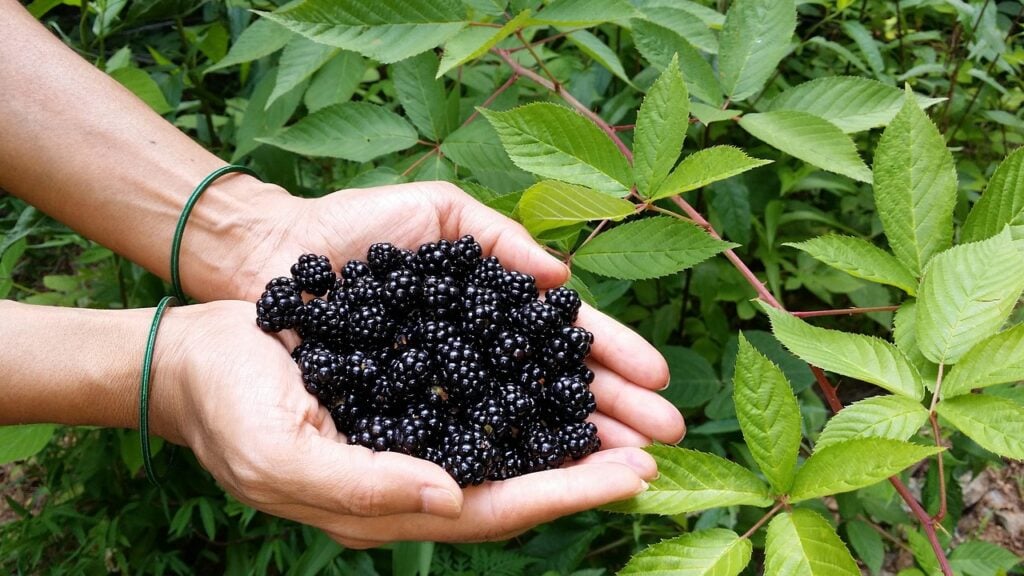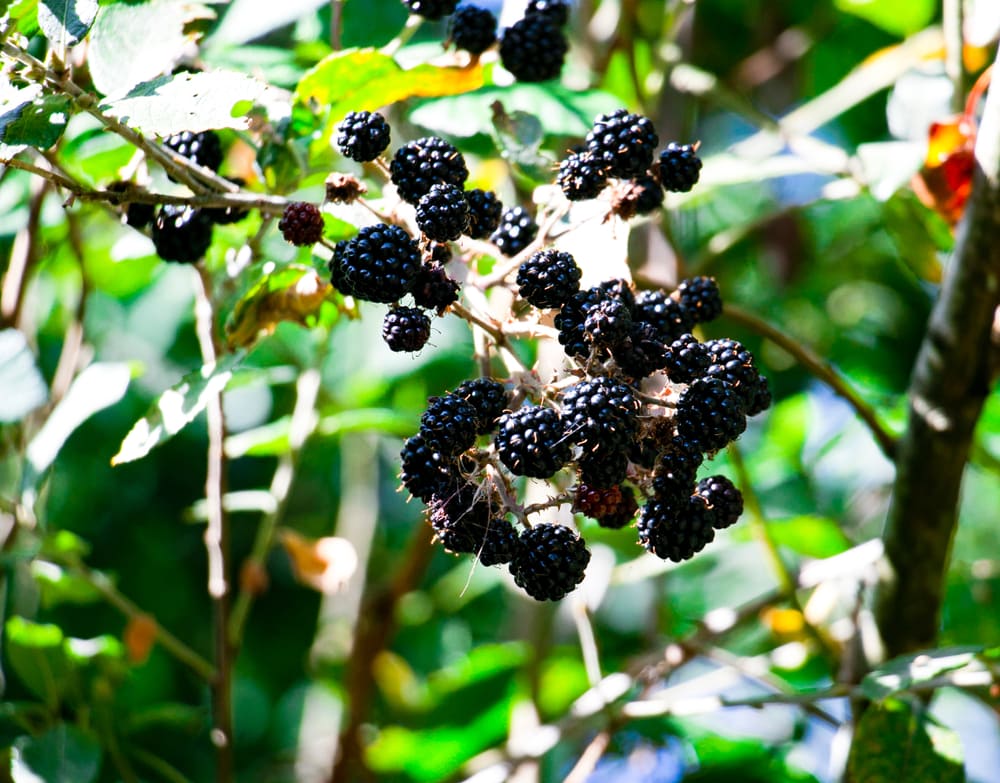How & When to Prune Blackberries (4 Expert Tips)
-
Ed Malaker
- Last updated:

Blackberries are great-tasting fruit that you can eat straight off the vine or use in countless recipes. However, many people don’t realize that pruning back these thorny plants at just the right time can lead to a substantially larger harvest. Keep reading as we list several tips on how and when to prune your blackberries to help you manage the plants easier and receive more fruit.
 Before You Begin
Before You Begin
Primocanes
The blackberry bush is a perennial plant that grows new shoots every year. First-year shoots are called primocanes, and they grow quickly and have thick, green foliage. They can get several feet tall if you don’t prune them, and flowering buds will appear late in the season. However, primocanes won’t produce any fruit.

Floricanes
Gardeners call the second-year shoots, floricanes. These are thicker and woodier than primocanes and will blossom in the spring and start producing fruit in mid-summer. After the berries are gone, the floricanes will start to die back, and no more berries will grow on these shoots.
Tools and Materials
Gathering your tools and supplies before you begin will help you complete the project in one go. For pruning primocanes and floricanes on a blackberry bush, you will need a thick pair of gardening gloves and a heavy shirt with sleeves to protect you from the thorns while you work. You will also need a pair of clean, sharp gardening shears and a bucket or trash bag to hold your clippings.
- Gardening gloves
- Heavy clothing
- Gardening shears
- Bucket
1. Late Winter/Early Spring
The first time to approach your blackberry bush with a pair of clean, sharp gardening shears is in late winter or early spring. You will be targeting your first-year primocanes. Thin these until there are only four to six remaining on each bush, starting with any damaged or diseased branches e. This pruning will help keep the plant manageable and focusing its energy on producing a larger harvest.

2. Spring
If the primocanes that you left growing in late winter are more than a few feet tall, cutting off the tips before flowering begins helps keep them manageable. It will also encourage side branching, leading to a bigger harvest next year, when these sprouts become floricanes. The side branching helps the stems become stronger, so they can better support the weight of the fruit. Cut off the tips so the sprout, or cane, is about 2 feet tall. If the spout isn’t quite 2 feet yet, only trim off 1–2 inches to encourage side branching.
3. Late Summer
Once you harvest your blackberries from mid to late summer, it will be time to target your floricanes for pruning. Use clean and sharp gardening shears to prune these shoots right to the ground. Since the floricanes will not produce fruit again, they only serve to create a tangled mess of thorns that will use up the plant’s energy and nutrients, resulting in a smaller harvest. Pruning them will make the plant much more manageable. Use care when pruning and removing these shoots, though, since they can be several feet long and covered with sharp thorns.

4. Fall
If you have one of the newer fall-bearing varieties of blackberry, it will produce a small amount of fruit on the tips of the primocanes in the fall. After harvesting these berries, you will need to prune away the tips a few nodes below the dead portion of the shoot to prepare it for winter.
 Other Tips and Tricks for Growing Blackberries
Other Tips and Tricks for Growing Blackberries
- Plant your blackberry bushes where they will receive full sun for the fastest growth and largest harvest.
- Blackberries need plenty of room, so space them at least 8 feet apart for the best results.
- If growing in pots, only put one plant in each container.
- Put light netting over your blackberry bushes when they have berries to prevent animals from picking at them.
- Harvest your blackberries as soon as they are ripe to redirect the plant’s energy and to prevent animals from eating them.
- Use a general fertilizer 3–4 weeks after planting to encourage growth.
- Plant your blackberry bushes in well-draining, nutrient-rich soil.
- To propagate your blackberry bush, take a 4-inch cutting in late spring. Plant the cutting in moist soil, and watch for roots to form in 2–4 weeks.
 Summary
Summary
Blackberry bushes have two kinds of stems, primocanes, and floricanes, and you will need to prune them at different times throughout the year. You will need to tend to the first-year primocanes in late winter and spring to prepare them for next year and set them up to produce a large harvest. Then, after you harvest your berries in late summer, you will need to tend to the floricanes, pruning them to the ground to keep the bush manageable.
Featured Image Credit: presvinay, Pixabay
Contents
 Before You Begin
Before You Begin